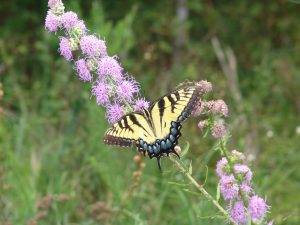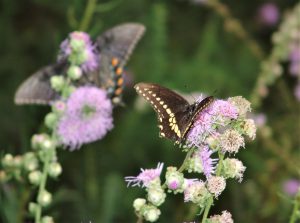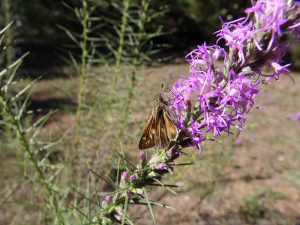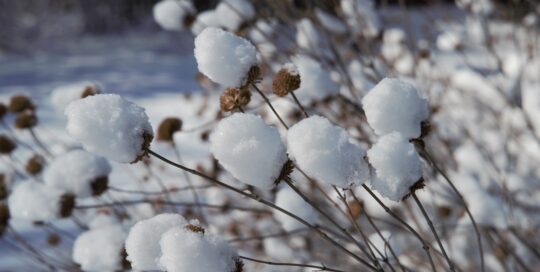Liatris: a Wonderful Butterfly-Attracting Plant
Views: 2057

While exploring Sequoyah State Park in Oklahoma with friends one weekend, we came across a stand of tall pink flowers covered in butterflies. They enchanted me and I asked to stop. My friends, seeing spectacular wildflowers, dozens of butterflies and bees, and a camera in my hand, happily dumped me on the roadside. They knew I would be entertained for hours. They spent the rest of the afternoon sight-seeing in the park. Meanwhile, I spent the afternoon taking mostly terrible butterfly pictures and getting sunburned, all with great glee and excitement.
Reflecting
I learned several things that afternoon: 1) Always, always wear a hat that shades the back of your neck. 2) I needed a better (translate: not a point-and-shoot) camera to take really good butterfly pictures. 3) I needed to learn how to use a not-point-and-shoot camera. 4) I needed to find a good butterfly guide so I could identify the butterflies I was photographing; and 5) I had to find out the name of these amazing, petal-free flowers so I could plant them in my own gardens. In the years since, I’ve done all five.

Butterflies on liatris (probably Liatris aspera).
Liatris
The flowers were a species of liatris, probably Liatris aspera, also known as Rough Blazingstar. Though this was a native colony, Liatris aspera is also cultivated, a great plant for native beds or sunny areas with poor to medium, well-drained soils. This is a native prairie plant. If planted in soil that is too rich, it may need to be staked up, a problem I had when I first tried planting it.
Wikipedia lists over 50 species of liatris in North America, but far fewer are in cultivation, around 13, perhaps. Common names include blazingstar and gayfeather. In the Asteraceae, or Sunflower family, like most their kin, liatris are sun-worshipers, and they, in turn, are worshiped by butterflies and other pollinators.
Some liatris species will tolerate light shade and moisture, but most (with some exceptions provided below) do not like persistently wet soil and may suffer from root rot and disease if planted in poorly drained, damp areas. Most will be drought-tolerant once established.
Specimens
There are enough liatris species available that you can find something appropriate for almost any garden situation, except, perhaps, total shade. Varieties I have seen advertised (as seeds, corms, or plants) include:
L. aspera
- Rough Blazingstar, zones 4-9, poor/dry soil
L. elegans
- Elegant Blazingstar or Pinkscale Blazingstar, zone 7-9, sandy/dry soil
L. ligulistylis
- Meadow Blazingstar, Rocky Mountain Blazingstar, or Meadow Gayfeather; zones 4-9, medium soil/medium moisture
L. punctata
- Dotted Blazingstar or Dotted Gayfeather, zones 3-9, poor/dry soil
- L. punctata var. mucronata – Texas Blazingstar or Texas Gayfeather, zones 5-9, poor/dry soil
L. pycnostachya
- Prairie Blazingstar or Kansas Gayfeather, zones 3-9; sand, loam, or clay/medium to moist soils (occurs naturally in tall grass prairies and damp meadows)
L. spicata
- Dense Blazingstar, zones 3-9, tolerates a wide variety of soils and moisture levels

I planted Liatris punctata at the top of my yard in poor, dry, sandy soil, and it attracted butterflies to an area that was otherwise devoid of interest.
Liatris blooms in late summer to early fall (August/September) and provides upright color in the garden. The pink to light purple flowers combine well with purple coneflowers or Salvia nemorosa, and they serve as a nice contrast to mounding plants with similar soil and moisture needs. Liatris works well in native gardens, butterfly gardens, prairie beds, or naturalized in mass plantings. Also, Liatris can be a good addition to rain gardens, depending on the soil and moisture levels encountered. Liatris will attract butterflies, bees, and other pollinators.
Meet Leslie Miller
Leslie Ann Miller shares 3.5 acres in rural Oklahoma with birds, butterflies and wide variety of animals. She is currently transforming her yard with plantings…
Leslie's Recent Posts

Firescaping 101






